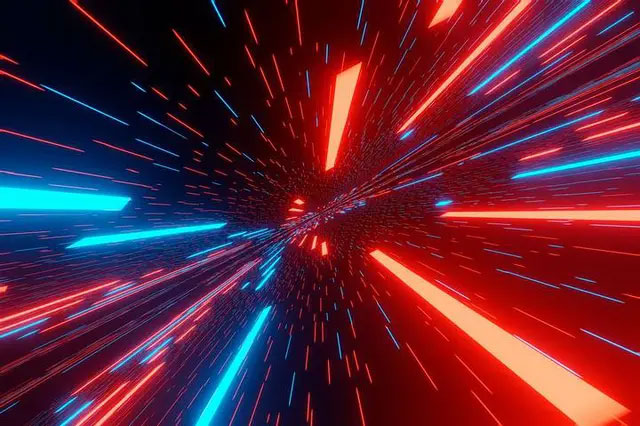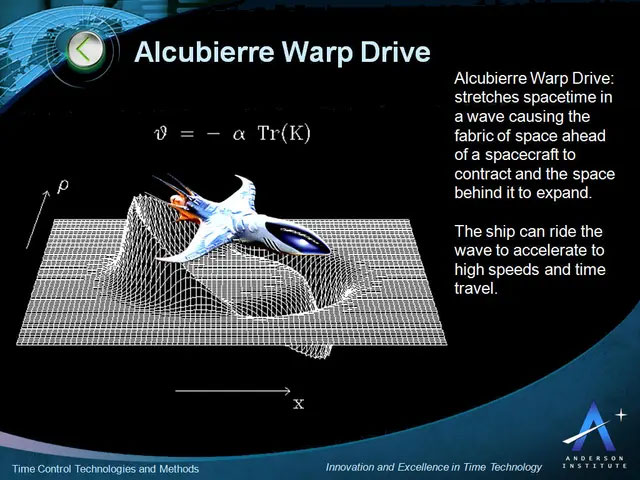Warp Engine: Technology brings us closer to the speed of light
The beginning of an understanding of warp engines was in 1994, when theoretical physicist Miguel Alcubierre proposed the concept of a space-warping engine.
Faster-than-light (FTL) travel is a staple of science fiction and interstellar travel. Of course, this technology will be extremely useful to us in the real world, and although Warp engines have been considered theoretically possible, they are still considered beyond our reach. Now, astrophysicist Erik Lentz has sketched a new theoretical design of Warp engines that could allow them to travel at the speed of light under normal physical conditions.

Warp engines - a type of engine that can warp space allowing objects to move from one point to another, instead of using Newton's physics-based propulsion. The concept of warp engines has always been associated with an unproven concept called "negative force".
This type of engine is based on bending or distorting space-time, the thrust of which will allow a spacecraft to travel at almost the speed of light, while avoiding problems related to time dilation.
The problem is, according to Einstein's general theory of relativity, it's physically impossible for anything to travel faster than the speed of light. This is because as an object moves faster its mass increases, so when it reaches the speed of light, that mass will approach infinity. Furthermore, it would need infinite energy to accelerate to that speed.

The beginning of an understanding of warp engines was in 1994, when theoretical physicist Miguel Alcubierre proposed the concept of a space-warping engine. From that time on, we used the name "Alcubierre engine" to refer to technology that did not exist yet.
But there may be some loopholes. In 1994, Mexican theoretical physicist Miguel Alcubierre outlined a design for a warp motor that could theoretically allow a ship to travel faster than light without breaking any any laws of physics.
The idea is to create a bubble of negative energy around the ship so that the space-time structure in front of it contracts and the space behind it expands. Basically, the warp engine uses a huge amount of energy - possibly more than the total amount of energy that exists in the universe - to contract and twist spacetime around the spacecraft to create a bubble. , isolated from the surrounding space.
In the center is a "flat" region of space-time where the ship can move freely, and if people are inside, they won't even feel that the ship is moving.

While studying previous warp impulse suggestions, astrophysicist Erik Lentz of the University of Göttingen realized that there were specific configurations of the space-time bubble that had been overlooked. These bubbles take the form of solitons (stable standard particles) - compact waves that travel at a constant speed without losing shape. Soliton is seen under certain circumstances in ripples in water, atmospheric movements that create eerie clouds, or light traveling through various media. In this case, the solitons propagate through spacetime itself.
Lentz discovered that certain soliton configurations could be formed using conventional energy sources, without violating any of Einstein's equations and without requiring any negative energy density. any.

Illustrate different spacecraft designs based on the theoretical shapes of superfast particles.
Lentz synthesized his theory after analyzing current research and discovering shortcomings in previous research on the issue. He believes that the solitons can travel faster than light and "create a guided plasma and ordinary electromagnetic fields".
While this discovery suggests the possibility of faster-than-light travel, it's still essentially in the concept stage for now. Such a travel machine would require a huge amount of energy that modern technology still cannot provide, "about 30 orders of magnitude more energy than modern nuclear reactors" - Dr. "Thankfully, several previous studies have suggested energy-saving mechanisms capable of reducing the required energy by nearly 60 orders of magnitude," Lentz estimates.

"This work takes the faster-than-light problem one step beyond theoretical research in fundamental physics and closer to engineering. The next step is to figure out how to reduce the amount of levels," Lentz said. the astronomical energy required in the range of today's technologies, such as a large modern nuclear fission power plant, then we can talk about building the first engine prototypes ".
The study was published in the peer-reviewed journal "Classical and Quantum Gravity".
- Is the warp drive engine jumping straight to another planet real?
- Light engine
- The smallest engine in the world is a million times smaller than an ant
- Things you don't know about the speed of light
- NASA revealed the latest design of the Warp Drive spacecraft
- Please watch the video made by NASA to see how slow the speed of light is
- US aircraft make up six times as fast as the speed of sound
- Gravity has a speed of light
- Bend light brings breakthroughs in stealth technology
- Find out how to speed up your computer to 'light speed'
- 10 tips for using computers for a long time
- Jet engine is 10 times faster than sound speed
 'Barefoot engineer' invents a pipeless pump
'Barefoot engineer' invents a pipeless pump Process of handling dead pigs due to disease
Process of handling dead pigs due to disease Radiometer
Radiometer CO2 . battery renewable energy storage system
CO2 . battery renewable energy storage system